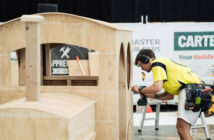There’s no doubt the past decade has been one of the most extraordinary periods for New Zealand’s construction industry, says QV CostBuilder Quantity Surveyor Martin Bisset.

While the last decade included dramatic spikes — particularly through 2021–2022 when global supply chains were disrupted and material costs soared — more recent years have brought greater stability.
Since its launch in 2015, QV CostBuilder has provided those working in the construction industry, including builders, quantity surveyors, valuers, architects, students and councils, with trusted data to help price and plan projects.
The platform now tracks more than 61,000 rates and 18,000+ material and installer prices nationwide and is updated monthly
“We’ve seen the cost of construction flatten out since 2023, with annual increases back down around one percent in 2025.
“Over the past decade, our data shows the cost of building a standard 175m² home rose 61 percent, compared with a 33 percent rise in general consumer prices,” says Bisset.
The cost of non-residential buildings (excluding educational) rose 42 percent over the decade — quite a bit less than residential increases.
Many salaries in New Zealand failed to keep pace with inflation, rising less than 33 percent over the past decade, making the affordability challenge even more pronounced for those wanting to build homes. Construction labour costs increased slightly higher than CPI, up about 35 percent.
QV CostBuilder is powered by state-owned enterprise Quotable Value (QV) and remains New Zealand’s most comprehensive subscription-based building-cost platform, covering everything from square-metre rates for homes, schools, and offices to material and labour pricing.
“QV CostBuilder’s consistent data has helped professionals benchmark costs and plan with greater confidence through some very challenging years,” says Bisset.
Over the past 10 years, 439,000 individual costs have been updated within QV CostBuilder, helping subscribers save thousands of hours of research time.
The platform delivers reliable, data-driven insights, providing 10 years of support and zero percent guesswork for construction professionals who rely on it to cost and plan projects with precision.
Materials
Some materials have risen far faster than the average over the period.
Cedar weatherboards recorded the greatest increase tracked by QV CostBuilder, rising from $17 per metre in 2015 to a high of $64 in 2022, before easing back to $53 today.
Shadowclad exterior plywood is up 110 percent, windows 72 percent, and steel sheet roofing 76 percent.
Radiata pine clear flooring climbed 122 percent, carpet 41 percent, ready-mix concrete 43 percent, and Radiata pine framing 45 percent.
Plywood saw one of the lowest rises, up just 12 percent.
Go to costbuilder.qv.co.nz for more details.



